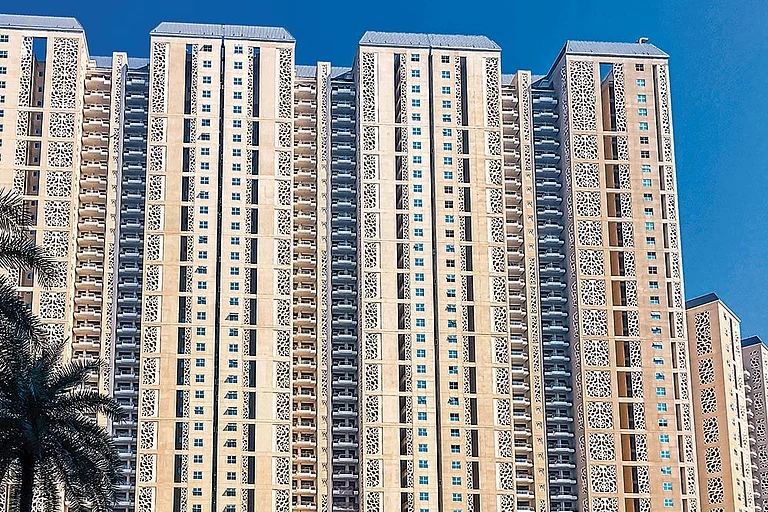Reserve Bank of India (RBI) Monetary Policy Committee (MPC), led by Governor Sanjay Malhotra, on April 9 announced its second consecutive 25 basis point cut in the repo rate, bringing it down to 6 per cent as of April 5, 2025. The new rate cut announcement came after the February 2025 rate cut. The February rate cut announcement was the first cut in nearly five years.
RBI MPC: How Will RBI Repo Rate Cut Impact Homebuyers? Industry Experts Decode
RBI MPC Announcement of repo rate cut by another 25 basis points is expected to reflect in home loan rates, claimed the real estate industry leaders
"After a detailed assessment of the evolving macroeconomic and financial conditions and outlook, the MPC voted unanimously to reduce the policy repo rate by 25 basis points to 6 per cent with immediate effect," said Malhotra.
This twin reduction totals 50 basis points in 2025. For floating-rate home loan borrowers, this means lower EMIs and improved affordability.
The repo rate is the rate at which the RBI lends to commercial banks. When it drops, borrowing becomes cheaper for both lenders and consumers. According to the RBI, inflation has eased into its comfort zone, enabling the central bank to focus on supporting growth amid global uncertainties and escalating trade tensions.
Lower EMIs, Stronger Sentiment
“Two consecutive rate cuts will give a fillip to the housing sector,” said Umesh Gowda H.A, Chairman of Sanjeevini Group. He expects home loan rates to dip below 8 per cent at most banks, directly benefiting both new and existing borrowers. He added that the accommodative stance could pave the way for more rate reductions if inflation remains under control.
Pradeep Aggarwal, Founder and Chairman of Signature Global (India) Ltd., echoed the sentiment, calling the cut “a timely and positive step.” He said the decision would significantly enhance homebuyer sentiment, improve affordability, and help developers fast-track project launches to meet rising demand.
The impact is already rippling through the real estate industry.
Boman Irani, President of CREDAI National, said, “With CPI inflation expected to moderate to 4.5 per cent, the rate cut is well-timed to uplift consumer sentiment and enhance borrowing capacity, especially in the housing sector.”
Affordable Housing in Focus
According to Vimal Nadar, Head of Research at Colliers India, the policy shift is especially critical in a global environment shaken by reciprocal tariffs and trade tensions. “Benchmark lending rate cuts will boost homebuyer sentiment, particularly in affordable and mid-income segments,” he said.
Real estate prices have already surged. As per Anuj Puri, Chairman of ANAROCK Group, average housing prices across India’s top seven cities jumped 17 per cent year-on-year, from Rs 7,550/sq. ft. in Q1 2024 to Rs 8,835/sq. ft. in Q1 2025. NCR and Bengaluru led the surge, recording 34 per cent and 20 per cent annual increases, respectively.
While Puri welcomed the RBI’s move, he remained cautious. “Banks have not transmitted earlier cuts due to high funding costs and rising NPAs. Home loan borrowers may only see partial relief,” he said. He advised borrowers to consider negotiating or transferring loans to benefit from lower rates.
Developers Ready to Capitalize
The RBI’s move also reduces capital costs for developers, allowing them to accelerate construction and launch new projects.
Ashok Kapur, Chairman of Krishna Group and Krisumi Corporation, said the twin rate cuts will push fence-sitting buyers into action and help developers respond to a likely surge in demand.
Dharmendra Raichura, VP & Head of Finance at Ashar Group, noted that reduced rates improve credit access, especially in mid and premium segments. “It allows developers to focus on faster execution, quality construction, and customer-centric offerings,” he said.
The impact also extends to alternative investments. Ankur Jalan, CEO of Golden Growth Fund, pointed out that falling fixed deposit returns could steer high-net-worth individuals toward high-return alternatives like real estate-focused AIFs.
Boost to Senior and Affordable Housing
Senior living and affordable housing sectors are expected to benefit significantly. Anantharam Varayur, Co-Founder of Manasum Senior Living, said lower rates will make senior-friendly housing more accessible. He also cited RBI’s 6.7 per cent GDP growth projection for FY26 and inflation control at 4.2 per cent as supportive macro indicators.
Manju Yagnik, Vice Chairperson of Nahar Group and Senior VP at NAREDCO Maharashtra, said the cut comes at a crucial time. “It enhances purchasing power, stimulates demand, and particularly strengthens the affordable housing segment.”
Kirthi Chilukuri, MD of Stonecraft Group, said the move boosts financial predictability for homebuyers in cities like Hyderabad and Pune, where affordability has been strained by rising EMIs.
Industry-Wide Optimism
Mohit Malhotra, CEO of NeoLiv, said the cut would drive housing demand and support sectoral investments, while Sunny Bijlani, Joint MD of Supreme Universal, called the move “a powerful enabler” for buyers looking to upgrade.
The RBI’s policy has also drawn praise for its stabilizing effect amid global economic uncertainty. Amit Goyal, MD of India Sotheby’s International Realty, said the rate cut would help sustain real estate momentum and support demand recovery.
G Hari Babu, National President of NAREDCO, noted that the reduced borrowing cost is likely to deplete unsold inventory and encourage new launches, especially in affordable housing. He also expects spillover benefits for commercial real estate.


